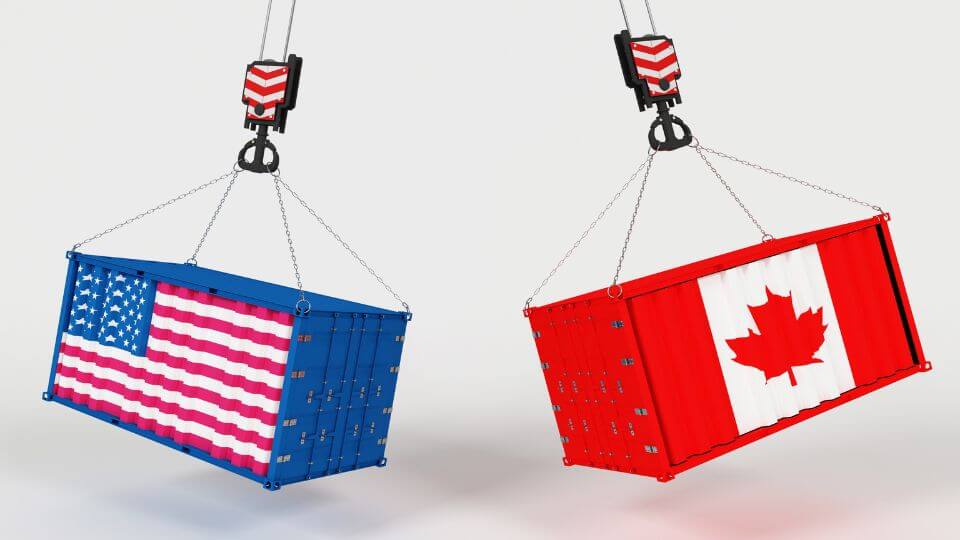The United States, a global leader in trade, relies heavily on imports to maintain its economic momentum. From the technology powering our daily lives to the clothes on our backs, a vast array of goods constantly flow in the country. Let’s dive deeper into the top 10 U.S. imports by value, exploring the key companies behind these products and the intricate global supply chains that bring them to American shores.

1. Machinery
Machinery, a broad category encompassing everything from cutting-edge computer components to industrial robots, takes the top spot. This dominance reflects the US’s dependence on a complex global supply chain for its technological needs. American tech giants like Apple design and develop revolutionary products, while companies such as Samsung (South Korea) manufacture crucial components like semiconductors. Intel (USA), another key player, not only develops its own processors but also partners with foundries worldwide for large-scale production.
- Estimated Value: $386.4 billion
- Most Common Goods:
- Computers and laptops
- Semiconductors
- Telecommunication equipment
- Industrial machinery
- Machine tools
- Construction equipment
- Medical equipment
- Electronic components
2. Electrical Machinery
Electrical machinery encompasses a wide range of products, from power generation equipment like turbines to consumer electronics like smartphones. This category highlights the US’s continued demand for innovative electrical goods. Established players like Toshiba (Japan) and Philips (Netherlands) have long been major suppliers, while Asian powerhouses like LG (South Korea) are making significant inroads. General Electric (US), a household name, continues to develop and import cutting-edge electrical machinery, showcasing the enduring presence of American innovation in this sector.
- Estimated Value: US$367.1 billion
- Most Common Goods:
- Power generation equipment
- Transmission and distribution equipment
- Industrial motors and drives
- Household appliances
- Consumer electronics
- Power tools
- Medical devices
- Lighting equipment
3. Vehicles and Automobiles
The U.S. remains a major automobile market, with a healthy mix of domestic and foreign carmakers. Japanese giants like Toyota dominate the import scene, known for their fuel efficiency and reliability. American stalwarts like General Motors and Ford strive to complete by focusing on innovation and consumer preferences. The German powerhouse Volkswagen Group, with its diverse brands like Audi and Porsche, is another major player, showcasing the global nature of the automotive industry.
- Estimated Value: US$306.7 billion
- Most Common Goods:
- Passenger cars (sedans, SUVs, luxury cars, electric vehicles)
- Light trucks and vans (pickup trucks, cargo vans)
- Other vehicles (motorcycles, buses)
- Vehicle parts and components (engines and transmissions, auto electronics, tires)
4. Minerals, Fuels, and Oil
Despite the US’s own oil production, it still relies on imports to meet its energy needs. Major state-controlled oil and gas companies like Saudi Aramco (Saudi Arabia) and Gazprom (Russia) are key suppliers, alongside established Western firms like BP (UK). The inclusion of ExxonMobil (US) reflects the continued presence of American giants in the global energy market, even as the world transitions towards renewable energy sources.
- Estimated Value: US$241.4 billion
- Most Common Goods:
- Fossil fuels (crude oil, refined petroleum products, natural gas)
- Minerals and Metals (iron ore, copper, rare earth elements, construction aggregates)
- Other industrial minerals (potash, phosphate rock, industrial sand)
5. Pharmaceuticals
The pharmaceutical industry is another crucial import sector, ensuring a steady supply of life-saving medications. Switzerland boasts two major players – Novartis and Roche – both renowned for their research and development capabilities. US giants Pfizer and Merck & Co. contribute significantly as well, with a strong focus on innovative drugs and therapies. This import dependence reflects the international nature of pharmaceutical research and development, where collaboration across borders is key to bringing new medications to market.
- Estimated Value: US$116.3 billion
- Most Common Goods:
- Prescription drugs and medications
- Other pharmaceutical products (vaccines, biological drugs, over-the-counter medications)
- Medical supplies
6. Medical Equipment and Supplies
Medical equipment and supplies encompass a wide range of products, from complex diagnostic imaging machines to simple bandages. Siemens (Germany) and Philips (Netherlands) are major players, supplying advanced medical equipment like MRI scanners and ultrasound machines. US companies like Medtronic and Abbott Laboratories are also significant contributors, focusing on medical devices like pacemakers and stents. This import diversity ensures that American hospitals and healthcare providers have access to the latest medical technology.
- Estimated Value: US$93.4 billion
- Most Common Goods:
- Diagnostic equipment (imaging machines, laboratory equipment)
- Treatment equipment (surgical instruments, dialysis machines, anesthesia machines, respiratory equipment, pacemakers and defibrillators)
- Medical supplies (personal protective equipment, disposable medical supplies)
7. Furniture, Lighting, and Signs
This category reflects the US’s demand for affordable and stylish furniture, lighting fixtures, and signage. The import sources for these products are diverse, with many coming from countries across Asia like China and Vietnam. While specific companies are difficult to pinpoint due to the fragmented nature of the industry, major retailers like Walmart and IKEA play a crucial role in sourcing and distributing these imported goods.
- Estimated Value: US$72.1 billion
- Most Common Goods:
- Furniture (upholstered furniture, cabinet furniture, bedroom furniture, office furniture, outdoor furniture)
- Lighting (general lighting fixtures, LED lighting, decorative lighting, outdoor lighting)
- Signs (commercial signage, traffic signs, digital signage)
8. Plastics
Plastics are essential for a wide range of industries, from packaging and construction to automotive and healthcare. The US relies on global sources for these materials, with major suppliers spread across Asia, the Middle East, and even North America. BASF (Germany), a chemical giant, is a leading producer of various plastics, while companies like ExxonMobil (US) also have a significant plastics manufacturing presence. This complex web of international suppliers ensures a steady flow of these versatile materials that underpin numerous sectors of the US economy.
- Estimated Value: US$61.9 billion
- Most Common Goods:
- Packaging plastics
- Construction plastics
- Consumer goods
- Industrial plastics
9. Gems and Precious Metals
The US remains a major consumer of diamonds, gold, and other precious metals, with a thriving jewelry industry. De Beers Group (South Africa), a diamond industry giant, plays a major role in supplying rough diamonds for cutting and polishing, while established Swiff firms like Richemont and Swatch Group are key players in the luxury watch market. The import of precious metals also feeds into various industrial applications, with companies like Johnson Matthey (UK) supplying specialty metals for electronics and aerospace.
- Estimated Value: US$60.8 billion
- Most Common Goods:
- Gems (diamonds, colored gemstones, pearls)
- Precious metals (gold, silver, platinum, palladium)
- Industrial uses (industrial diamonds, rare earth elements)
- Investment (gold bars and coins)
10. Organic Chemicals
Organic chemicals encompass a vast array of carbon-based compounds used in numerous industries. These chemicals serve as building blocks for everything from plastics and pharmaceuticals to points and textiles. Major suppliers include Dow (US), a chemical giant with a global presence, and BASF (Germany), another industry leader. The US also imports organic chemicals from countries like China and India, reflecting the globalized nature of the chemical industry.
- Estimated Value: US$54.6 billion
- Most Common Goods:
- Chemicals for plastics production
- Chemicals for pharmaceuticals and fine chemicals
- Chemicals for paints and coatings
- Other industrial chemicals
- Bio-based chemicals
Conclusion
The top 10 US imports showcase the country’s deep integration into the global trade network. From the technology powering our daily lives to the clothes on our backs, a constant flow of goods from around the world keeps the US economy humming. As the global landscape continues to evolve, the composition of US imports will likely adapt to reflect changing consumer demands, technological advancements, and geopolitical considerations. This intricate web of international trade ensures a steady supply of goods that American consumers and businesses rely on, highlighting the interconnectedness of the modern world economy.









